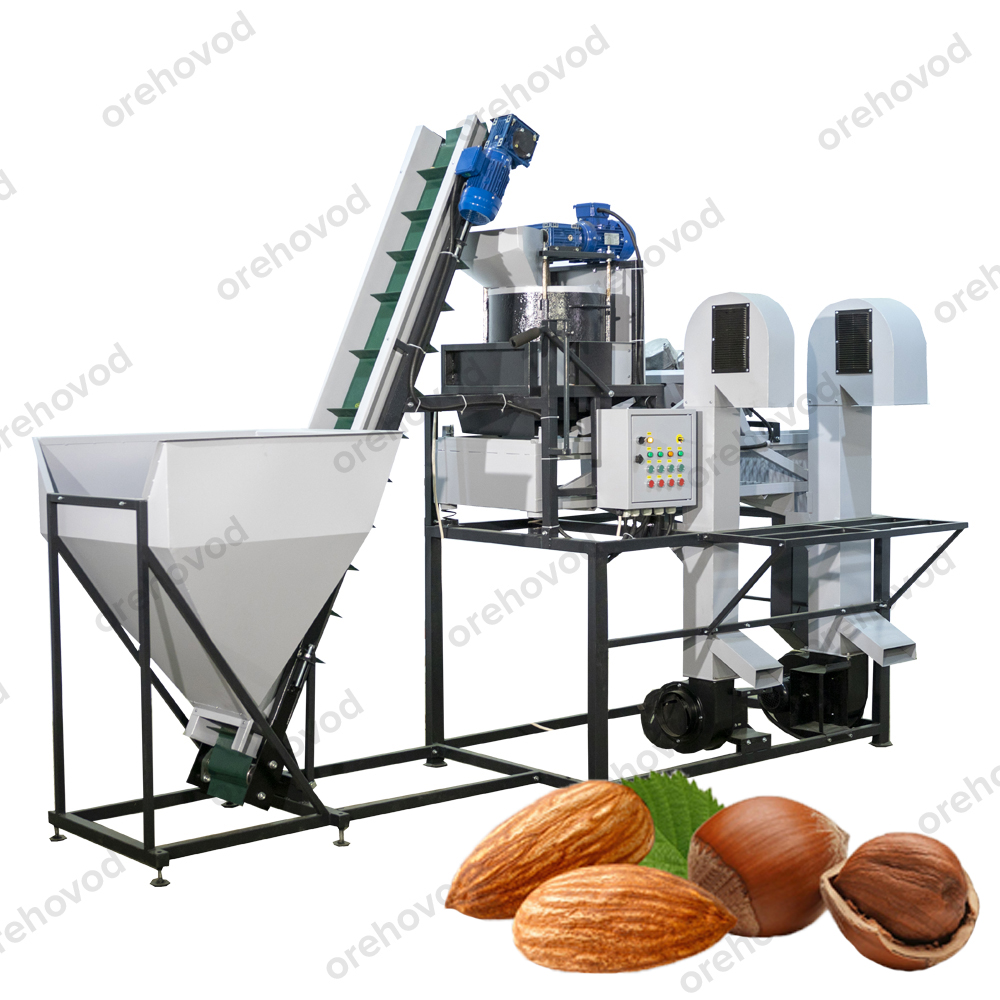The industrial line for processing hazelnuts in industrial orchards and factories. The line is a single piece of equipment of compact size, with a common control panel and maximum process automation.
The industrial line performs:
- Moving the hazelnut to the Nutcracker. A conveyor with a large hopper ensures uninterrupted operation of the line and a uniform supply of hazelnuts to the cracking and sorting line without human intervention.
- Cracking a hazelnut on a drum nutcracker for hazelnuts and almonds. The maximum-performance nutcracker gently cracks hazelnuts and yields up to 90% of the whole kernel.
- Sorting of cracked hazelnuts on a vibrating sieve with an aspiration system. In the process of sorting, you get a kernel sorted into 2 fractions, as well as shells and uncracked hazelnut in separate containers. Sorting equipment is used for high-quality and fast sorting of cracked hazelnuts in large volumes and performs up to 95% of all sorting work.
The productivity of the industrial line is up to 200 kg/h. With a normalized 8-hour working day, the equipment is able to process up to 1600 kg of hazelnut (crack and sorting). As a result of the line operation, you get a sorted kernel, ready for further processing or packaging. For comparison, with the manual processing of such a quantity of hazelnuts, about 60 people will be required.
The line can be equipped with an in-shell hazelnut calibrator and an inspection table to control the quality of the kernel before packaging.
Only one operator is needed to service the line - to load hazelnuts into the bunker and control the line.
* The line has settings for processing almonds.
* The color or shade of the product in the photograph may differ from the real one.
Shipping cost is NOT included in the price of the item. To find out the cost of delivery to your country, contact the manager. All about the terms of delivery and payment here.
! Declared characteristics may differ when using low-quality raw materials.
* Low-quality raw materials mean:
- walnut affected by disease, mold or rot;
- a nut with a thick shell and partitions that have grown into the kernel;
- overdried walnut (the kernel crumbles during processing);
- wet elastic walnut, which, after splitting, retains its integrity and will not do without manual cleaning.

